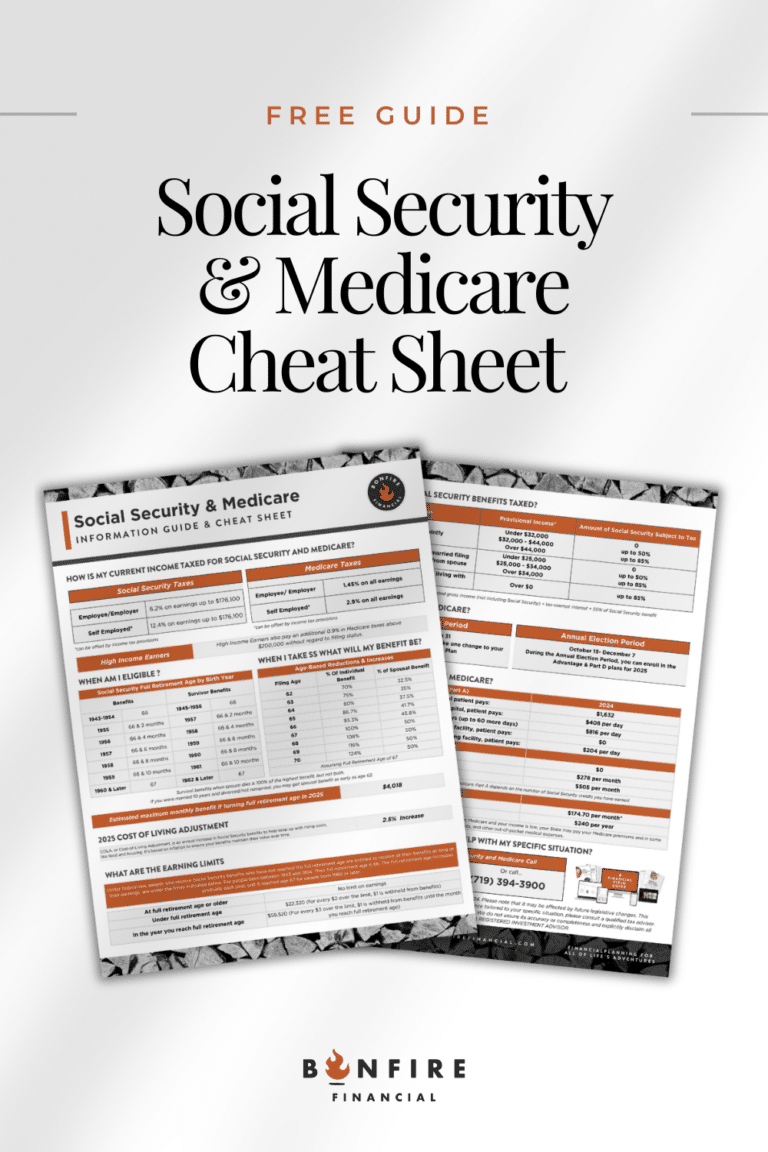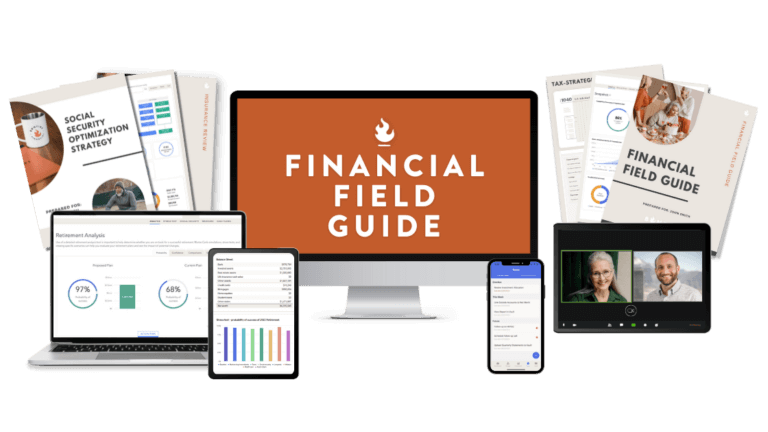Retirement Planning for Self-Employed & 1099 Employees
Listen to the full episode on the Podcast!
iTunes | Spotify | iHeartRadio | Amazon Music | Castbox
Today we are addressing a critical topic for self-employed business owners, Independent Contractors and 1099 employees: retirement planning without a company-sponsored plan. In the absence of traditional employer benefits, it’s essential to take proactive steps. We’ll explore various retirement strategies tailored for those who must self-manage their retirement savings, including Solo 401(k)s, SEP IRAs, and other investment options.
Understanding the Challenge of Retriemtn for the Self-Employed
For business owners and 1099 employees, the lack of a company-sponsored retirement plan means taking full responsibility for your financial future. While this can seem daunting, it also offers unparalleled control over how you save and invest your money. You decide the best ways to grow your wealth and ensure a comfortable retirement.
Why Retirement Planning is Crucial
Retirement planning is about more than just setting aside money for the future; it’s about creating a stable financial foundation that allows you to maintain your lifestyle and achieve your goals without relying on income from your business or contract work. Effective retirement planning involves assessing your current financial situation, setting realistic goals, and implementing strategies to achieve those goals.
The Power of Solo 401(k)s
One of the most powerful retirement planning tools for self-employed business owners and 1099 employees is the Solo 401(k). This plan is designed for self-employed individuals and independent contractor and offers several benefits:
- High Contribution Limits: Solo 401(k)s allow for significant contributions, combining employee deferrals and employer contributions. In 2024, the contribution limit is $23,000 for employees under 50, with an additional $6,500 catch-up contribution for those 50 and over. Employer contributions can bring the total to $69,000 or $76,500 for those 50 and over.
- Roth Option: Many Solo 401(k) plans offer a Roth option, allowing after-tax contributions that grow tax-free. This can be particularly advantageous for high-income earners looking to minimize future tax liabilities.
- Loan Provision: Solo 401(k)s often include a loan provision, enabling you to borrow from your retirement savings if needed. This feature can provide liquidity without triggering taxes or penalties, as long as the loan is repaid according to the plan’s terms.
>> Click here for this year’s current contribution limits <<
Exploring SEP IRAs and SIMPLE IRAs
SEP IRAs and SIMPLE IRAs are other viable options for self-employed individuals. Both plans have their unique advantages:
- SEP IRA (Simplified Employee Pension):
- Contribution Limits: SEP IRAs allow contributions up to 25% of your net earnings from self-employment, with a maximum limit of $66,000 in 2024.
- Ease of Administration: SEP IRAs are relatively simple to set up and maintain, making them a popular choice for small business owners.
- Flexibility: Contributions are flexible and can vary from year to year, which is beneficial for businesses with fluctuating income.
- SIMPLE IRA (Savings Incentive Match Plan for Employees):
- Employee and Employer Contributions: SIMPLE IRAs allow both employee deferrals and employer contributions. In 2024, employees can defer up to $15,500, with an additional $3,500 catch-up contribution for those 50 and over.
- Mandatory Employer Contributions: Employers must either match employee contributions up to 3% of compensation or make a fixed contribution of 2% of compensation for all eligible employees.
- Lower Administrative Costs: SIMPLE IRAs have lower administrative costs compared to 401(k) plans, making them an attractive option for small businesses.
Diversifying Your Investments
Beyond retirement accounts, diversifying your investments is crucial for financial stability. Diversification spreads risk and increases the potential for returns across different asset classes. Here are some ways to diversify:
- Stocks and Bonds: Investing in a mix of stocks and bonds can provide growth and income. Stocks offer the potential for capital appreciation, while bonds provide steady income and lower volatility.
- Real Estate: Real estate investments can provide rental income and long-term appreciation. Consider investing in residential, commercial, or industrial properties based on your risk tolerance and investment goals.
- Private Equity: Private equity allows investors to buy into privately held companies or funds that aren’t traded on public exchanges. It can offer higher potential returns and access to unique growth opportunities, but it typically requires a longer investment horizon and a higher risk tolerance.
- Private Placements: For those with the expertise and risk tolerance, private placements can offer high returns. Investing in startups or private companies directly can be lucrative, but it’s essential to conduct thorough due diligence.
- Cryptocurrency: While more volatile, cryptocurrencies like Bitcoin can be part of a diversified portfolio. It’s essential to approach this asset class with caution and only invest what you can afford to lose.
Creating a Safety Net
Building a financial safety net is critical for self-employed business owners and 1099 employees. Here are some strategies to ensure you have a cushion for unexpected events:
- Emergency Fund: Maintain an emergency fund with 3-6 months’ worth of living expenses. This fund should be easily accessible and kept in a liquid, low-risk account.
- Insurance: Protect your income and assets with appropriate insurance coverage. Consider disability insurance, life insurance, and business insurance to safeguard against unforeseen circumstances.
- Regular Withdrawals: Establish a routine for withdrawing funds from your business or investment accounts. This ensures you are continually building your safety net and not solely reinvesting all profits back into the business.
Tax Efficiency and Planning
Effective tax planning is essential for maximizing your retirement savings when you are self-employed. Here are some strategies to consider:
- Deferring Income: Take advantage of retirement accounts that offer tax-deferred growth, such as traditional IRAs and Solo 401(k)s. Contributions to these accounts reduce your taxable income in the year they are made.
- Roth Conversions: Consider converting traditional retirement accounts to Roth accounts during years when your income is lower. This strategy can result in significant tax savings over time. You can further this strategy with a Backdoor Roth.
- Tax-Loss Harvesting: Offset capital gains with capital losses through tax-loss harvesting. This strategy involves selling losing investments to reduce your taxable gains.
- Consult a Tax Professional: Work with a tax professional to develop a comprehensive tax strategy tailored to your unique situation. They can help you navigate the complexities of tax laws and identify opportunities for savings.
Setting Realistic Goals
Setting realistic retirement goals is essential for creating a workable plan. Here are steps to help you define and achieve your retirement objectives:
- Assess Your Current Financial Situation: Take stock of your assets, liabilities, income, and expenses. Understanding your financial position is the first step in planning for the future.
- Define Your Retirement Lifestyle: Consider the lifestyle you want in retirement. Factor in travel, hobbies, healthcare, and living expenses to determine how much you need to save.
- Estimate Retirement Expenses: Calculate your expected expenses in retirement, accounting for inflation and potential changes in your lifestyle. This estimate will guide your savings goals.
- Develop a Savings Plan: Create a plan to reach your retirement goals. Determine how much you need to save each year and choose the appropriate retirement accounts and investment strategies to achieve your objectives.
- Monitor and Adjust: Regularly review your retirement plan and make adjustments as needed. Life changes, market conditions, and new financial goals may require you to update your strategy.
Conclusion
Retirement planning for self-employed business owners, independent contractors and 1099 employees may lack the convenience of a company-sponsored plan, but it offers the advantage of complete control over your financial future. By leveraging tools like Solo 401(k)s, SEP IRAs, and SIMPLE IRAs, diversifying your investments, creating a safety net, and planning for tax efficiency, you can build a robust retirement strategy. Set realistic goals, stay disciplined, and regularly review your plan to ensure a secure and comfortable retirement. Taking these proactive steps will help you achieve financial peace of mind, knowing you have a well-thought-out financial plan for your future.
Next Steps:
Ready to set up your plan or have questions? Schedule a call with us today!
 Client Login
Client Login







